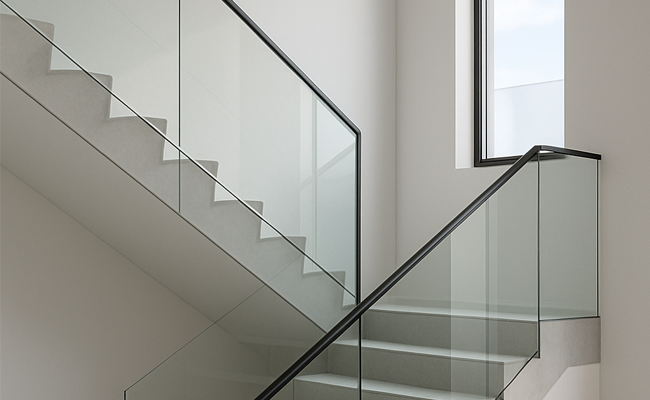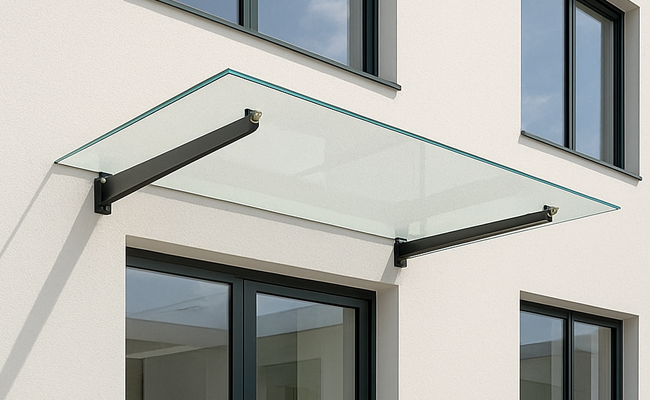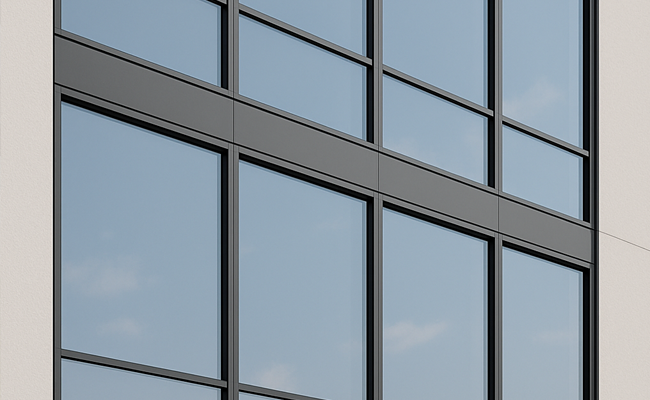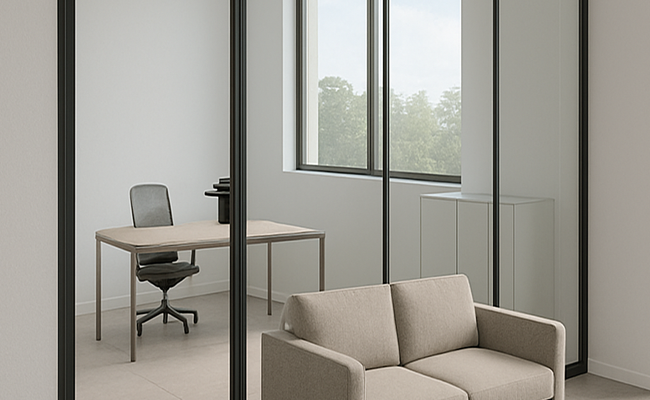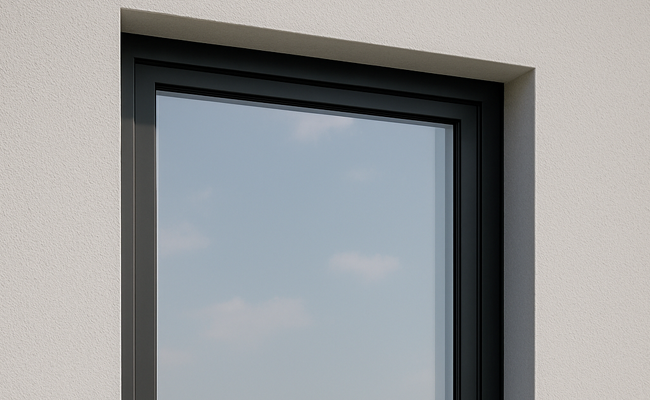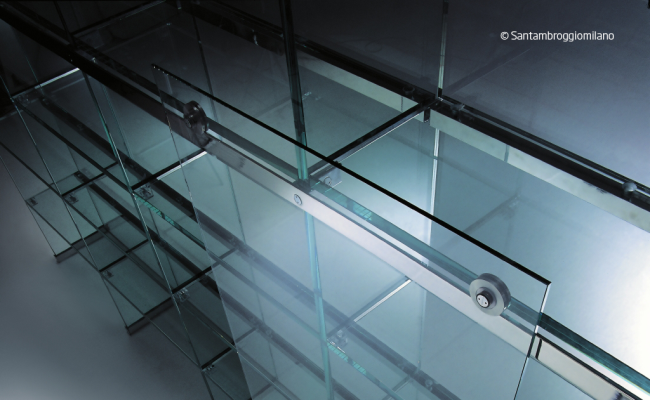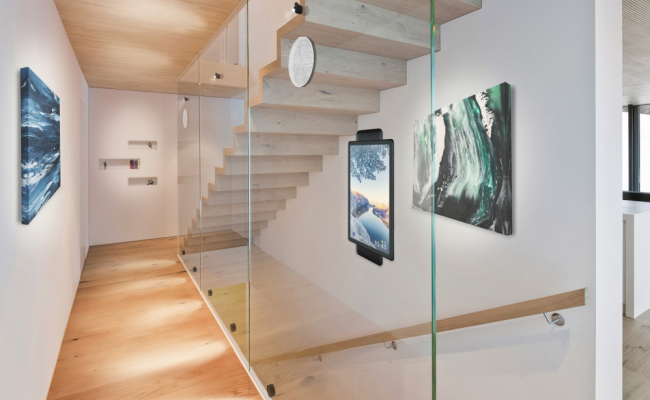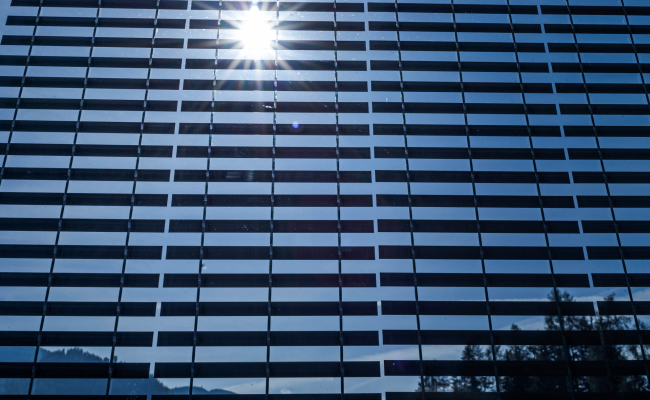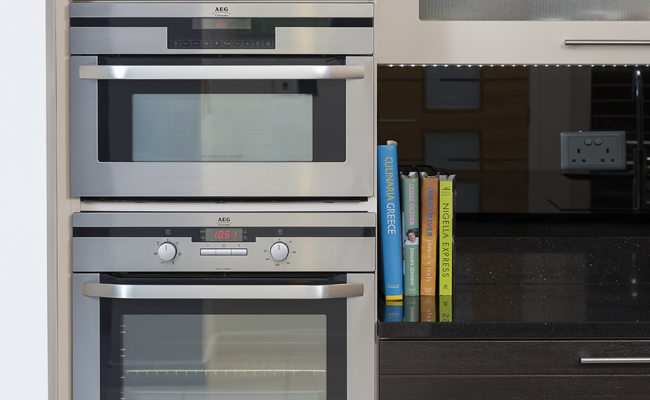Window FAQs
Yes.
Single Glazing
The coating on Pilkington K Glass™ is very hard and is difficult to scratch. Unfortunately, it is slightly rough (although not in a visible sense), so it may collect marks and dirt in a way which is difficult to clean off. It is inadvisable to use it as single glazing for this reason with the Pilkington K Glass™ coating to the exterior*.
If Pilkington K Glass™ is used in single glazing with the coating facing the room, it may also promote the formation of condensation. This is because the coating acts as a barrier to heat, keeping the glass colder than ordinary single glazing. Because the surface is colder, condensation will form more readily and in larger quantities than on ordinary single glazing.
The only circumstances where Pilkington K Glass™ would not generally promote condensation on the room surface is when the external temperature is always higher then the room temperature. This can occur if the room is a cold store, or if the building is in the tropics.
*Note. Some manufacturers of proprietary systems are using Pilkington K Glass™ in situations where the coating is on the external surface, apparently without significant problems of dirt and marks over several years of use. However, NSG Group do not and will not take any responsibility for the durability and performance of Pilkington K Glass™ when used in this manner.
Secondary Glazing
Pilkington K Glass™ can be used in secondary glazing, with the Pilkington K Glass™ as the inner pane with the coating facing the air gap between the two panes. Although the coated surface will have to be cleaned occasionally, it is generally protected by being in the cavity and washing with clean soapy water or a clear window cleaning solution should maintain it in good condition.
There is a risk of the coating being marked by the sliding sashes when used in secondary sliding glazing systems.
As with any secondary glazing, there is a risk of condensation on the inner surface of the outer pane, unless the air gap has some ventilation to the outside, possibly just through gaps in the existing window.
Single Glazing
The coating on Pilkington K Glass™ is very hard and is difficult to scratch. Unfortunately, it is slightly rough (although not in a visible sense), so it may collect marks and dirt in a way which is difficult to clean off. It is inadvisable to use it as single glazing for this reason with the Pilkington K Glass™ coating to the exterior*.
If Pilkington K Glass™ is used in single glazing with the coating facing the room, it may also promote the formation of condensation. This is because the coating acts as a barrier to heat, keeping the glass colder than ordinary single glazing. Because the surface is colder, condensation will form more readily and in larger quantities than on ordinary single glazing.
The only circumstances where Pilkington K Glass™ would not generally promote condensation on the room surface is when the external temperature is always higher then the room temperature. This can occur if the room is a cold store, or if the building is in the tropics.
*Note. Some manufacturers of proprietary systems are using Pilkington K Glass™ in situations where the coating is on the external surface, apparently without significant problems of dirt and marks over several years of use. However, NSG Group do not and will not take any responsibility for the durability and performance of Pilkington K Glass™ when used in this manner.
Secondary Glazing
Pilkington K Glass™ can be used in secondary glazing, with the Pilkington K Glass™ as the inner pane with the coating facing the air gap between the two panes. Although the coated surface will have to be cleaned occasionally, it is generally protected by being in the cavity and washing with clean soapy water or a clear window cleaning solution should maintain it in good condition.
There is a risk of the coating being marked by the sliding sashes when used in secondary sliding glazing systems.
As with any secondary glazing, there is a risk of condensation on the inner surface of the outer pane, unless the air gap has some ventilation to the outside, possibly just through gaps in the existing window.
Cleaning of Glass
Glass should normally be cleaned with a clean cloth and a clear non-abrasive cleaner, such as clean soapy water or a proprietary window cleaner. For glass with a patterned, etched or sandblasted surface, a stiff bristle or nylon brush can be used to remove dirt from the recesses in the surface.
If the glass does not become clean using the above methods the following can be tried:
Use a mild acid (e.g. vinegar) or a mild solvent (e.g. methylated spirit), taking care not to spill any of these on other surfaces or materials.
If neither treatment works then the glass will need to be abraded and re-polished. this is likely to be expensive and should be left to experts. The process may result in some optical distortion where the glass surface has been removed.
Special Notes on Cleaning
Organic solvent cleaners should be avoided on mirrors since they may attack the backing paint.
Leaded Glass should only be cleaned with a clear non-abrasive cleaner. The cleaner should be of a type that does not remove the patina (aged surface finish) of the lead.
Patterned glass, acid etched glass and sandblasted glass should only be cleaned with a clear non-abrasive cleaner. Any insoluble material in the cleaner may deposit in the recesses of the etching or sandblasting and may be very difficult to remove.
Alternatively, have Pilkington Activ™ installed in your replacement windows or conservatory. This revolutionary new coated glass which goes on the external surface of windows or conservatories has a unique dual action. When exposed to daylight the coating breaks down any organic dirt deposits such as bird droppings and tree sap and then when it rains the rain water washes the loosened dirt away leaving the windows streak free. It is available from window companies nationwide for all external glass areas of your home but is especially beneficial in hard to reach areas such as conservatory roofs, rooflights, inaccessible windows or just to save time and keep the large expanses of glass we love in our homes looking clean. For more information, click through to the Pilkington Activ™ product page.
Glass should normally be cleaned with a clean cloth and a clear non-abrasive cleaner, such as clean soapy water or a proprietary window cleaner. For glass with a patterned, etched or sandblasted surface, a stiff bristle or nylon brush can be used to remove dirt from the recesses in the surface.
If the glass does not become clean using the above methods the following can be tried:
Use a mild acid (e.g. vinegar) or a mild solvent (e.g. methylated spirit), taking care not to spill any of these on other surfaces or materials.
If neither treatment works then the glass will need to be abraded and re-polished. this is likely to be expensive and should be left to experts. The process may result in some optical distortion where the glass surface has been removed.
Special Notes on Cleaning
Organic solvent cleaners should be avoided on mirrors since they may attack the backing paint.
Leaded Glass should only be cleaned with a clear non-abrasive cleaner. The cleaner should be of a type that does not remove the patina (aged surface finish) of the lead.
Patterned glass, acid etched glass and sandblasted glass should only be cleaned with a clear non-abrasive cleaner. Any insoluble material in the cleaner may deposit in the recesses of the etching or sandblasting and may be very difficult to remove.
Alternatively, have Pilkington Activ™ installed in your replacement windows or conservatory. This revolutionary new coated glass which goes on the external surface of windows or conservatories has a unique dual action. When exposed to daylight the coating breaks down any organic dirt deposits such as bird droppings and tree sap and then when it rains the rain water washes the loosened dirt away leaving the windows streak free. It is available from window companies nationwide for all external glass areas of your home but is especially beneficial in hard to reach areas such as conservatory roofs, rooflights, inaccessible windows or just to save time and keep the large expanses of glass we love in our homes looking clean. For more information, click through to the Pilkington Activ™ product page.
Your window company should demonstrate this to you when he has completed the installation by using a detector which will light up in the presence of Pilkington K Glass™ within the double glazed unit.
There are a number of ways that this can be achieved including using double glazed units which have uneven thicknesses of glass in the front and back panes, using regular laminated glass in one of the panes or for the best reduction, use of special laminated glass such as Pilkington Optiphon™. Ask your window company for advice.
Building regulations demand that all glass which is low level, close to doors or greater than a certain size should be toughened or laminated to demonstrate that has impact resistance to the required standard.
The stamp confirms the number of the standard it is tested against, the level it achieved and some sort of identification to identify who supplied it. If you have any concerns about whether glass has been installed to the correct standard refer first to your window supplier and if you are not satisfied with their response to the Glass and Glazing Federation at https://www.ggf.org.uk/ or your local Trading Standards Office.
The stamp confirms the number of the standard it is tested against, the level it achieved and some sort of identification to identify who supplied it. If you have any concerns about whether glass has been installed to the correct standard refer first to your window supplier and if you are not satisfied with their response to the Glass and Glazing Federation at https://www.ggf.org.uk/ or your local Trading Standards Office.
Window Energy Ratings were introduced in 2005 as a means for window companies to demonstrate compliance with Building Regulations concerning energy efficiency of their windows. The Window Energy Rating level is shown on a label attached to the window which looks very much like the kind of label you will have seen in the past on domestic appliances such as fridges and washing machines.
For further information relating to Window Energy Ratings please click here.
For further information relating to Window Energy Ratings please click here.
The U value is one measure of how well your windows are keeping your heat in. So called Low Emissivity coatings which offer heat insulation normally define their efficiency using the U value. The lower the U value the better the insulation. There is now however a new measure of the overall energy efficiency of your windows called the Window Energy Rating (WER).
Measured on an A to G scale and using the labelling system we are all used to seeing on fridges and washing machines, the WER takes account of how well the window utilises free heat energy from the sun as well.
A window with a rating from E up to the top level which is A, meets the regulations concerning the energy efficiency of buildings. Ask your window installer for more details.
Measured on an A to G scale and using the labelling system we are all used to seeing on fridges and washing machines, the WER takes account of how well the window utilises free heat energy from the sun as well.
A window with a rating from E up to the top level which is A, meets the regulations concerning the energy efficiency of buildings. Ask your window installer for more details.
Pilkington K Glass™ is a low emissivity glass, specifically designed to enhance the thermal insulation of insulating units. It achieves this by being positioned in the insulating unit with the Pilkington K Glass™ coating on a surface facing the cavity.
In a double glazing unit, counting the surfaces from the exterior of the building, The Pilkington K Glass™ coating should be on surface 2 (the inner surface of the outer pane) or surface 3 (the cavity surface of the inner pane).
Pilkington K Glass™ performs the function of enhancing the thermal insulation (reducing the U value) equally well whether it is positioned on surface 2 or surface 3. However, with any coated glass, there may be slight optical effects when the coating is present. These optical effects are reduced when Pilkington K Glass™ is used with the coating on surface 3, rather than surface 2.
General advice is that the preferred location of the Pilkington K Glass™ coating is on surface 3 of the unit, but if the glass types used in the unit make it difficult to assemble the unit with the Pilkington K Glass™ coating on surface 3, then no loss of thermal performance is obtained by using it on surface 2. In particular, when Pilkington K Glass™ is combined with Pilkington Texture Glass, where the Pilkington Texture glass is normally installed as the inner pane of a double glazing unit, the Pilkington K Glass™ should be installed with its coating on surface 2. Any slight optical effects will be masked by the presence of the Pilkington Texture Glass.
In a double glazing unit, counting the surfaces from the exterior of the building, The Pilkington K Glass™ coating should be on surface 2 (the inner surface of the outer pane) or surface 3 (the cavity surface of the inner pane).
Pilkington K Glass™ performs the function of enhancing the thermal insulation (reducing the U value) equally well whether it is positioned on surface 2 or surface 3. However, with any coated glass, there may be slight optical effects when the coating is present. These optical effects are reduced when Pilkington K Glass™ is used with the coating on surface 3, rather than surface 2.
General advice is that the preferred location of the Pilkington K Glass™ coating is on surface 3 of the unit, but if the glass types used in the unit make it difficult to assemble the unit with the Pilkington K Glass™ coating on surface 3, then no loss of thermal performance is obtained by using it on surface 2. In particular, when Pilkington K Glass™ is combined with Pilkington Texture Glass, where the Pilkington Texture glass is normally installed as the inner pane of a double glazing unit, the Pilkington K Glass™ should be installed with its coating on surface 2. Any slight optical effects will be masked by the presence of the Pilkington Texture Glass.
Normally Pilkington K Glass™ would be on surface 3 of the double glazed unit counting from the outside ie. the surface on the inside of the unit on the pane which faces the interior of the house.
However, patterned glass such as Pilkington Texture Glass is normally positioned on the inside since the surface is not flat.
In this case Pilkington K Glass™ can be positioned on surface 2 ie. the inner surface of the external pane where thermal efficiency is effected to a negligible degree.
However, patterned glass such as Pilkington Texture Glass is normally positioned on the inside since the surface is not flat.
In this case Pilkington K Glass™ can be positioned on surface 2 ie. the inner surface of the external pane where thermal efficiency is effected to a negligible degree.
We receive a lot of enquiries about the appearance of external condensation particularly in the spring and autumn. Whilst we state in our literature that fitting modern low glazing increases the chances of external condensation, it does seem to surprise many customers. Firstly we need to say that the appearance of external condensation is not a fault in the glass or the windows. The phenomenon is a natural and predictable event caused by the outer pane of the glazing being colder that the glass that it replaced. With single glazing and older style double glazing a larger proportion of heat was lost to the outside through the glass. With modern low e glass products more of the heat is kept inside and the outer pane is not heated as much. Moisture condenses out of the air onto a cold surface that is said to be below the dew point. The dew point varies with the air temperature and the amount of moisture it contains. In spring and autumn in particular the glass temperature can fall to a low level during the night and the dew point can be comparatively high in these seasons. The glass is more often likely to be below the dew point in these conditions and the moisture condenses onto the surface.
We are all obliged to fit more thermally efficient windows in our homes to comply with the building regulations. There are only a few exceptions to the regulations and they tend to apply to unheated spaces that would suffer external condensation to the same extent anyway. The trend is to use glass that has lower Ug values over time and the lower the Ug value the lower the outer pane temperature is likely to be and the bigger the risk of condensation on the external surface. In northern European countries where they use triple glazing with very low Ug values the phenomenon is understood and accepted. The householders are focused on saving energy and maintaining a comfortable internal environment.
There is not much that can be done to avoid the risk of condensation to the outside. Heating the room more would have an effect but this understandably is not a good option. In many cases the condensation does not last long. A little heat from the sun warms the outer glass enough to evaporate the moisture and a gentle breeze or wind will do the same job. Those people who have fitted Pilkington Activ™ may also notice that they get fewer occurrences. To reduce the risk of condensation on the outside glass surface we recommend our Pilkington Anti-condensation Glass.
Pilkington Activ™ self cleaning glass is as prone to condensation as any other glass but the properties of this product means it doesn’t allow the water to form beads on the surface of the glass and so you don’t see the effect to the same degree. You may notice that not all of the panes are affected by early morning condensation even in the same window. Even subtle differences in orientation and the position of objects outside the window can change the surface temperature of the glass to the point that one pane suffers and another does not. Any object (be it an overhang, canopy, tree etc.) blocking off the window to a clear night sky may also have the effect reducing the occurrences.
A plus point is the knowledge that your windows are keeping the heat in as they are designed to do thus proving that you have a superior insulating glass product. The presence of external condensation in a particular season does not mean that the glass will suffer the same throughout the year. Any occurrence is beyond the control of the window supplier and is a natural result of the environmental conditions.
If you are experiencing condensation to the inside of the room or there is condensation between the panes of glass then that is a different problem. Misting between the panes indicates a seal failure and the glass should be replaced. Misting inside the room may be as a result of a failed unit seal but is more likely to be the humidity or moisture content of the air in the room being very high, e.g. from a bathroom or kitchen. Bottled gas and paraffin heaters produce a lot of moisture and even breathing expels enough moisture in an unventilated space to cause the formation of condensation. Increasing the ventilation to such spaces helps control the problem.
We are all obliged to fit more thermally efficient windows in our homes to comply with the building regulations. There are only a few exceptions to the regulations and they tend to apply to unheated spaces that would suffer external condensation to the same extent anyway. The trend is to use glass that has lower Ug values over time and the lower the Ug value the lower the outer pane temperature is likely to be and the bigger the risk of condensation on the external surface. In northern European countries where they use triple glazing with very low Ug values the phenomenon is understood and accepted. The householders are focused on saving energy and maintaining a comfortable internal environment.
There is not much that can be done to avoid the risk of condensation to the outside. Heating the room more would have an effect but this understandably is not a good option. In many cases the condensation does not last long. A little heat from the sun warms the outer glass enough to evaporate the moisture and a gentle breeze or wind will do the same job. Those people who have fitted Pilkington Activ™ may also notice that they get fewer occurrences. To reduce the risk of condensation on the outside glass surface we recommend our Pilkington Anti-condensation Glass.
Pilkington Activ™ self cleaning glass is as prone to condensation as any other glass but the properties of this product means it doesn’t allow the water to form beads on the surface of the glass and so you don’t see the effect to the same degree. You may notice that not all of the panes are affected by early morning condensation even in the same window. Even subtle differences in orientation and the position of objects outside the window can change the surface temperature of the glass to the point that one pane suffers and another does not. Any object (be it an overhang, canopy, tree etc.) blocking off the window to a clear night sky may also have the effect reducing the occurrences.
A plus point is the knowledge that your windows are keeping the heat in as they are designed to do thus proving that you have a superior insulating glass product. The presence of external condensation in a particular season does not mean that the glass will suffer the same throughout the year. Any occurrence is beyond the control of the window supplier and is a natural result of the environmental conditions.
If you are experiencing condensation to the inside of the room or there is condensation between the panes of glass then that is a different problem. Misting between the panes indicates a seal failure and the glass should be replaced. Misting inside the room may be as a result of a failed unit seal but is more likely to be the humidity or moisture content of the air in the room being very high, e.g. from a bathroom or kitchen. Bottled gas and paraffin heaters produce a lot of moisture and even breathing expels enough moisture in an unventilated space to cause the formation of condensation. Increasing the ventilation to such spaces helps control the problem.
Haze is an optical phenomenon which makes the glass look like it is covered in a very fine, uniform, layer of dust when viewed from an oblique angle or viewed under strong light incident on the glass at an oblique angle.
Pilkington K Glass™ can, under certain lighting conditions, display this phenomenon to a limited extent.
The reason for this is that the Pilkington K Glass™ coating is not as smooth as the glass surface. While this is not obvious to the eye when examining the glass, some people who regularly handle Pilkington K Glass™ can tell which side the coating is on by the feel of it.
The optical effect of the slightly rougher surface is to scatter a small proportion of the light incident on it (in exactly the same way as a thin layer of dust would, which is why it looks similar). With Pilkington K Glass™, the amount of scattered light is generally less than half of one percent of the light coming through the window, so under most viewing conditions it is not obvious. However, when incident sunlight is at an oblique angle and the view through the glass is of a shaded area, then the scattered light can become more visible, giving rise to the appearance of haze.
Most coated glasses are susceptible to the phenomenon of haze, to a greater or lesser extent. The amount of haze on Pilkington K Glass™ is limited as far as practicable, and is generally better controlled than on its direct competitors in the field of low emissivity coatings.
Pilkington K Glass™ can, under certain lighting conditions, display this phenomenon to a limited extent.
The reason for this is that the Pilkington K Glass™ coating is not as smooth as the glass surface. While this is not obvious to the eye when examining the glass, some people who regularly handle Pilkington K Glass™ can tell which side the coating is on by the feel of it.
The optical effect of the slightly rougher surface is to scatter a small proportion of the light incident on it (in exactly the same way as a thin layer of dust would, which is why it looks similar). With Pilkington K Glass™, the amount of scattered light is generally less than half of one percent of the light coming through the window, so under most viewing conditions it is not obvious. However, when incident sunlight is at an oblique angle and the view through the glass is of a shaded area, then the scattered light can become more visible, giving rise to the appearance of haze.
Most coated glasses are susceptible to the phenomenon of haze, to a greater or lesser extent. The amount of haze on Pilkington K Glass™ is limited as far as practicable, and is generally better controlled than on its direct competitors in the field of low emissivity coatings.
The benefits of reduced condensation and high thermal insulation obtained from using Pilkington K Glass™ are due to the presence of a special transparent metallic type coating on one of the surfaces of the double glazing unit. This ultra-thin coating is transparent but has a very small effect on white light transmission.
Pilkington K Glass™ has high light transmission and often appears indistinguishable from clear float glass. For this reason it is recommended that the presence of the coating is confirmed by the use of a Pilkington K Glass™ detector after installation. However, the coating does have a pale straw coloured tint and when a light coloured object or material is viewed through the glazing, depending on local circumstances and conditions, occasionally a slight darkening effect may be seen.
This may make net curtains or Georgian Bars look grubby or discoloured in certain situations.
Unfortunately, there is no way of overcoming this characteristic, although it does confirm the presence of Pilkington K Glass™ in the windows.
Pilkington K Glass™ has high light transmission and often appears indistinguishable from clear float glass. For this reason it is recommended that the presence of the coating is confirmed by the use of a Pilkington K Glass™ detector after installation. However, the coating does have a pale straw coloured tint and when a light coloured object or material is viewed through the glazing, depending on local circumstances and conditions, occasionally a slight darkening effect may be seen.
This may make net curtains or Georgian Bars look grubby or discoloured in certain situations.
Unfortunately, there is no way of overcoming this characteristic, although it does confirm the presence of Pilkington K Glass™ in the windows.
You need to refer in the first instance to your window supplier who will inspect the units and then take up the matter with the unit supplier if appropriate. This is not something that NSG Group is able to assist with directly since your contract is with you installer. If Pilkington units are installed and considered to be at fault your window installer will take up the matter with the supplying NSG Group company directly.
You do need to take this up with your installer. In order to help please browse through our range of Pilkington Texture Glass and the Pilkington Oriel Collection patterns.
Cleaning of Glass
Glass should normally be cleaned with a clean cloth and a clear non-abrasive cleaner, such as clean soapy water or a proprietary window cleaner. For glass with a patterned, etched or sandblasted surface, a stiff bristle or nylon brush can be used to remove dirt from the recesses in the surface.
If the glass does not become clean using the above methods the following can be tried:-
Use a mild acid (e.g. vinegar) or a mild solvent (e.g. methylated spirit), taking care not to spill any of these on other surfaces or materials.
If neither treatment works then the glass will need to be abraded and re-polished. this is likely to be expensive and should be left to experts. The process may result in some optical distortion where the glass surface has been removed.
Special Notes on Cleaning
Organic solvent cleaners should be avoided on mirrors since they may attack the backing paint.
Leaded Glass should only be cleaned with a clear non-abrasive cleaner. The cleaner should be of a type that does not remove the patina (aged surface finish) of the lead.
Patterned glass, acid etched glass and sandblasted glass should only be cleaned with a clear non-abrasive cleaner. Any insoluble material in the cleaner may deposit in the recesses of the etching or sandblasting and may be very difficult to remove.
Glass should normally be cleaned with a clean cloth and a clear non-abrasive cleaner, such as clean soapy water or a proprietary window cleaner. For glass with a patterned, etched or sandblasted surface, a stiff bristle or nylon brush can be used to remove dirt from the recesses in the surface.
If the glass does not become clean using the above methods the following can be tried:-
Use a mild acid (e.g. vinegar) or a mild solvent (e.g. methylated spirit), taking care not to spill any of these on other surfaces or materials.
If neither treatment works then the glass will need to be abraded and re-polished. this is likely to be expensive and should be left to experts. The process may result in some optical distortion where the glass surface has been removed.
Special Notes on Cleaning
Organic solvent cleaners should be avoided on mirrors since they may attack the backing paint.
Leaded Glass should only be cleaned with a clear non-abrasive cleaner. The cleaner should be of a type that does not remove the patina (aged surface finish) of the lead.
Patterned glass, acid etched glass and sandblasted glass should only be cleaned with a clear non-abrasive cleaner. Any insoluble material in the cleaner may deposit in the recesses of the etching or sandblasting and may be very difficult to remove.
